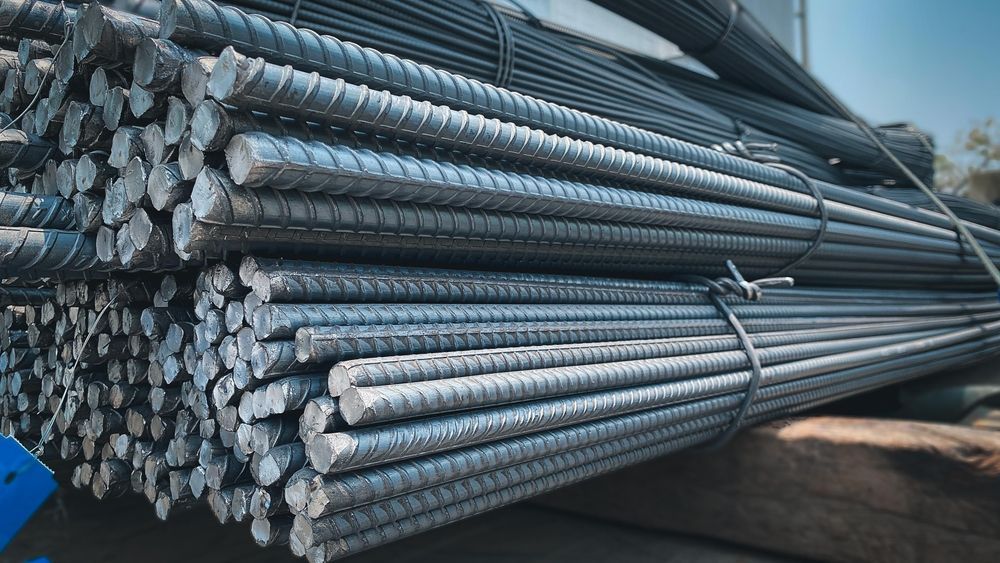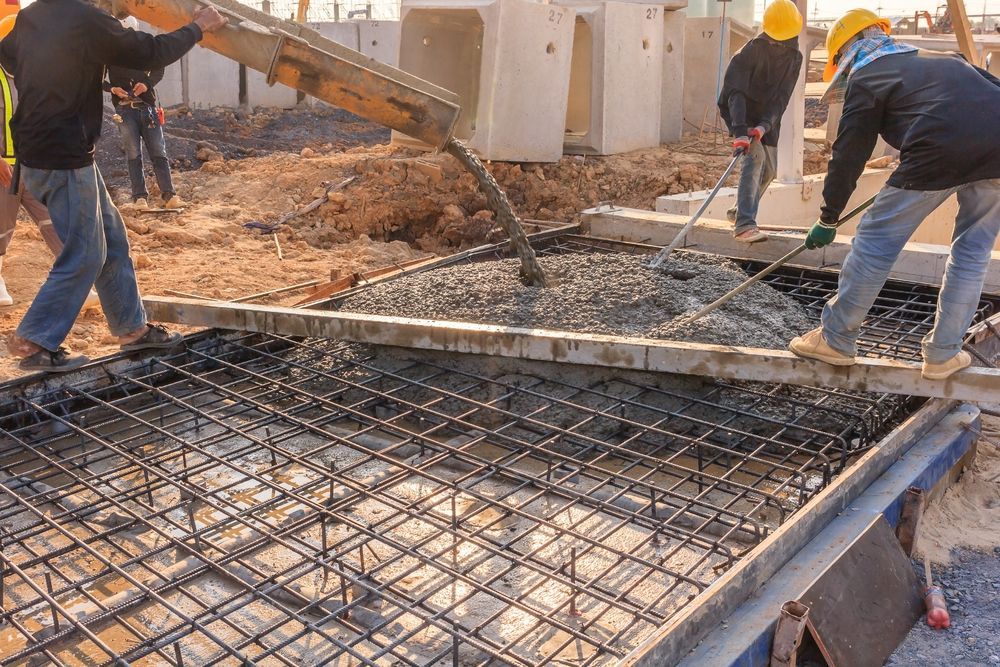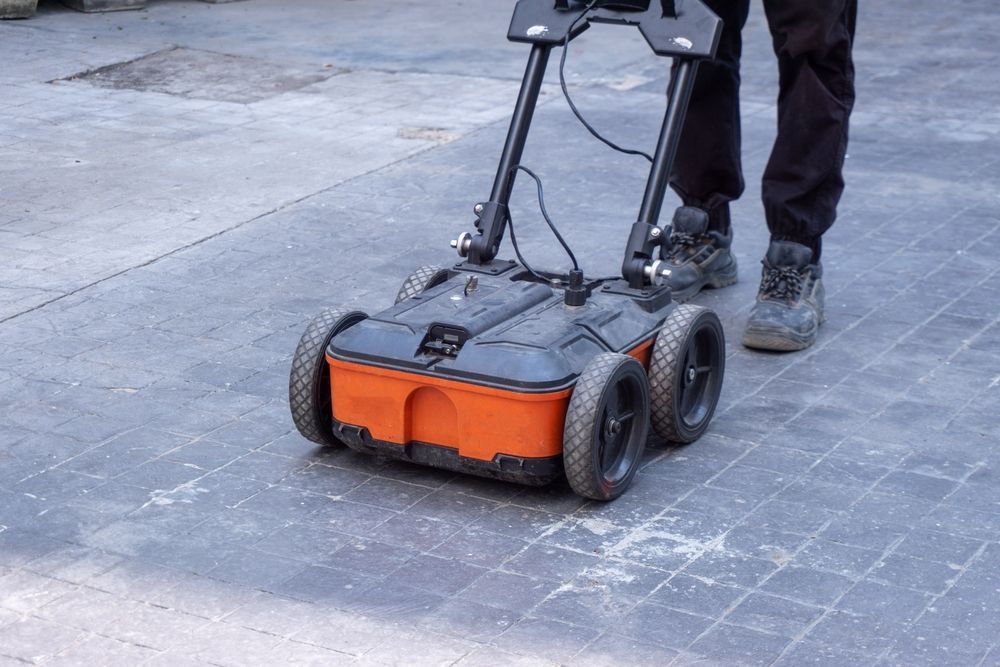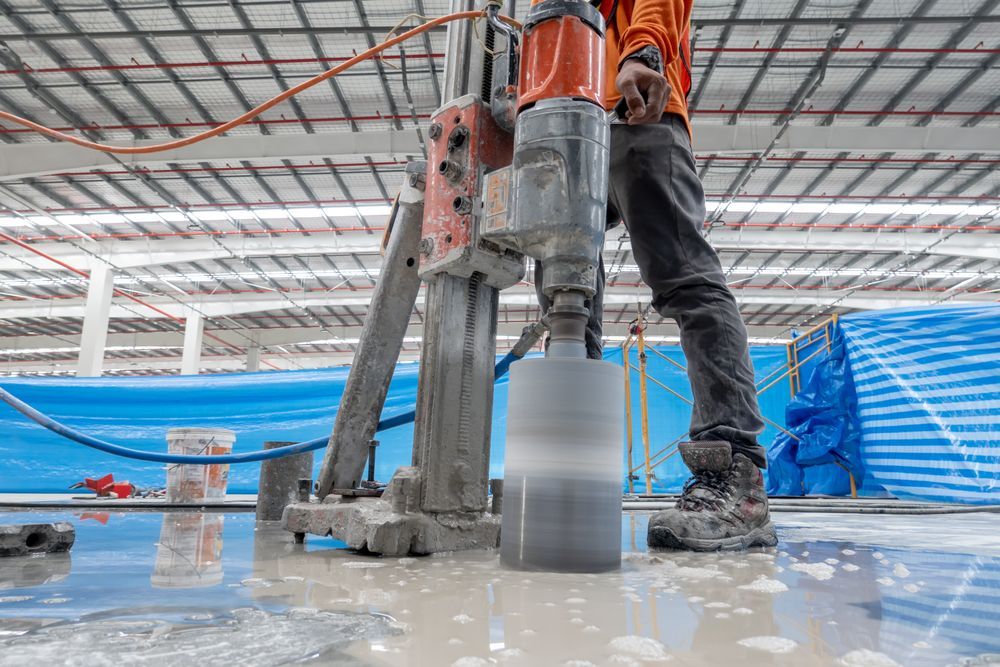Written by: Cobra Concrete Southeast

Reinforced concrete is a staple in modern construction, offering strength and durability for everything from bridges to high-rise buildings. But concrete alone isn't enough—it needs reinforcement to handle tension forces. That’s where rebar comes in.
What is Rebar?
Rebar, short for reinforcing bar, is a steel bar or mesh embedded in concrete to improve its tensile strength. While concrete excels at withstanding compression, it is prone to cracking under tension. Rebar helps counteract this weakness, ensuring that structures can handle both compressive and tensile forces.
Rebar comes in various shapes, sizes, and materials, each designed for specific applications. From traditional carbon steel to advanced fiber-reinforced bars, choosing the right type of rebar is essential for structural integrity.
What is the Importance of Rebar?
Without reinforcement, concrete structures would be far more susceptible to cracking and failure under stress. Rebar enhances the durability and lifespan of concrete by:
- Improving structural strength: Rebar helps concrete withstand tension and bending forces.
- Preventing cracking and shifting: It holds concrete together, reducing the likelihood of cracks spreading.
- Enhancing load-bearing capacity: Reinforced concrete can support heavier loads, making it suitable for large-scale projects.
- Increasing resistance to environmental factors: Certain types of rebar are designed to resist corrosion, extending the lifespan of structures in harsh conditions.
Because of these benefits, rebar is used in everything from highways and bridges to commercial buildings and residential foundations.
How is Rebar Made?
Rebar production starts with raw steel, typically sourced from recycled materials like scrap metal. The manufacturing process involves:
- Melting and refining: Steel is melted down in a furnace and purified to remove impurities.
- Forming and rolling: The molten steel is shaped into bars and rolled to the desired size and texture.
- Cooling and cutting: The bars are cooled and cut to standard lengths for distribution.
- Coating (if needed): Some rebar types, like epoxy-coated or galvanized rebar, receive additional treatments for corrosion resistance.
The final product is then transported to construction sites, where it’s used to reinforce concrete in various applications.
Exploring the Many Types of Rebar
Not all rebar is created equal. Different materials and coatings give rebar unique properties suited for specific environments and structural requirements.
Carbon Steel Rebar
Carbon steel rebar, also known as black rebar, is the most commonly used reinforcement in concrete. It offers excellent strength and is relatively inexpensive. However, it is prone to corrosion when exposed to moisture and chemicals, making it less suitable for marine or high-humidity environments.
Stainless Steel Rebar
Stainless steel rebar is highly resistant to corrosion and offers superior durability compared to carbon steel. It’s often used in structures that are exposed to saltwater, de-icing chemicals, or extreme weather conditions. While it’s more expensive, its longevity makes it a worthwhile investment for critical infrastructure projects.
Epoxy-Coated Rebar
Epoxy-coated rebar is essentially carbon steel rebar with a protective epoxy coating. This coating helps prevent rust and corrosion, making it a popular choice for structures exposed to moisture, road salts, and harsh environments.
While the epoxy layer provides excellent protection, it can be prone to chipping if not handled carefully. Once damaged, the exposed steel can begin to corrode, which may compromise the reinforcement over time. Despite this, epoxy-coated rebar is widely used in bridges, highways, and parking structures where corrosion resistance is essential.
Galvanized Rebar
Galvanized rebar is coated with a layer of zinc to protect it from corrosion. This coating is more durable than epoxy and can withstand rough handling without chipping. Because of its superior resistance to rust, galvanized rebar is often used in marine environments, wastewater treatment plants, and other structures exposed to high moisture levels.
Although it costs more than standard carbon steel rebar, its durability and lower maintenance needs make it a worthwhile investment for long-term projects.

Glass Fiber Rebar
Glass fiber reinforced polymer (GFRP) rebar is a non-metallic alternative to traditional steel reinforcement. Made from high-strength glass fibers and resin, it is completely resistant to corrosion, making it ideal for environments where moisture and chemicals are a concern.
Unlike steel rebar, GFRP does not conduct electricity or interfere with magnetic fields, making it a preferred choice for specialized applications like MRI rooms, tunnels, and electrical substations. However, it is more expensive and cannot be bent on-site like traditional steel rebar.
What Are Rebar Grades?
Rebar grades indicate the strength and composition of the material. Each grade is assigned based on its yield strength, which is measured in pounds per square inch (psi). Common rebar grades include:
- Grade 40: A standard option for light construction with a yield strength of 40,000 psi.
- Grade 60: One of the most widely used grades, offering a yield strength of 60,000 psi, suitable for commercial and infrastructure projects.
- Grade 75+: High-strength rebar used in heavy-duty applications like bridges and high-rise buildings.
Choosing the right grade depends on the structural requirements and environmental conditions of a project.
Common Rebar Sizes
Rebar comes in various sizes, each designated by a number that corresponds to its diameter in eighths of an inch. The most commonly used sizes include:
- #3 (⅜ inch): Typically used for small-scale projects like patios, driveways, and light foundations.
- #4 (½ inch): A versatile size often used in residential construction, including slabs and footings.
- #5 (⅝ inch): Commonly found in commercial projects, providing additional strength for reinforced concrete walls and columns
- #6 (¾ inch) and larger: Used for heavy-duty applications such as bridges, highways, and large-scale infrastructure projects.
The right rebar size depends on the structural requirements and load-bearing capacity needed for a given project.
Key Takeaways
- Rebar reinforces concrete by adding tensile strength.
- Different types of rebar offer varying levels of durability and corrosion resistance.
- Choosing the right grade and size depends on the project’s structural needs.
- Identifying rebar before cutting or coring is essential for safety and efficiency.
Identify Rebar Before Cutting Concrete!
Before cutting, coring, or sawing concrete, it's essential to locate rebar within the structure. Hitting rebar unexpectedly can damage equipment, cause delays, and even compromise structural integrity.
At Cobra Southeast, we use advanced Ground Penetrating Radar (GPR) scanning to accurately detect rebar, post-tension cables, and other embedded objects before cutting begins. Our precise scanning services help prevent costly mistakes and keep your project running smoothly.
Need to locate rebar before your next concrete cutting project?
Contact Cobra Southeast today for expert
GPR scanning services!
Southeast
119 Gateway Dr. #110
Canton, GA 30115
(770) 599-2098
Website imagined and executed by RivalMind.



